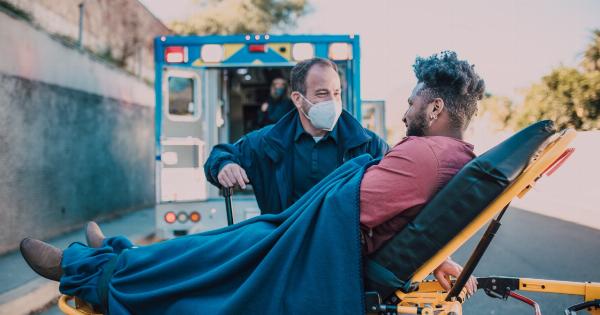Pressure points are specific areas of the body where major nerves or arteries are located. Applying pressure on these points can cause pain, discomfort, or even unconsciousness.
However, some pressure points are more dangerous than others and can be fatal if not treated promptly. In this article, we will discuss some of the pressure points that can be fatal and explain why they are dangerous.
What are pressure points?
Pressure points are sensitive areas of the body that can be used to alleviate pain, discomfort, or stress. These points are located along the meridian lines in the body, which are the pathways that carry energy.
There are hundreds of pressure points throughout the body, but some are more important than others.
Why are some pressure points more dangerous than others?
Some pressure points are more dangerous than others because they are located near major arteries or nerves. Applying too much pressure on these points can cause severe pain, damage to the nerves, or even death.
It is important to understand the location of these pressure points and to use caution when applying pressure.
1. Temporary Carotid Artery
The carotid artery is a major artery that supplies blood to the brain. The Temporal Carotid Artery is located on the side of the neck, between the ear and the middle of the collarbone.
Applying pressure to this point can cause unconsciousness within seconds, and if pressure continues, it can lead to brain damage or death.
2. Base of Skull
The occipital artery runs through the base of the skull and supplies blood to the back of the scalp. Applying pressure to the base of the skull can cause severe pain, dizziness, and even unconsciousness.
If not treated promptly, it can lead to brain damage or death.
3. Solar Plexus
The solar plexus is a nerve center located in the abdomen, behind the stomach. Applying pressure to this point can cause severe pain, nausea, and even unconsciousness. If not treated promptly, it can lead to respiratory failure or heart attacks.
4. Puncturing the Lung
The lung area is located on the side of the chest, just below the armpit. Puncturing the lung with a sharp object can cause the lung to collapse, which can lead to difficulty breathing, chest pain, and even death.
5. Popliteal Artery
The popliteal artery is a major artery that supplies blood to the lower leg. It is located behind the knee, and applying pressure to this point can cause severe pain, numbness, and even loss of function in the lower leg.
6. Inner Thigh
The inner thigh area is packed with major arteries, including the femoral artery. Applying pressure to this area can cause severe pain, and if done improperly, it can lead to damage to the leg or even death.
7. Temple
The temple is located on the side of the head and is a major pulse point. Applying pressure to this point can cause severe pain and even unconsciousness. If not treated promptly, it can lead to brain damage or death.
8. Upper Arm
The upper arm contains major blood vessels and nerves, including the brachial artery. Applying pressure to this area can cause severe pain, numbness, and even paralysis of the arm.
9. Lower Leg
The lower leg area is packed with major blood vessels and nerves, including the anterior tibial artery. Applying pressure to this area can cause severe pain, numbness, and even loss of function in the leg.
10. Neck
The neck is a fragile area of the body that contains major arteries, nerves, and the spinal cord. Any injury to the neck can cause severe pain, paralysis, and even death.
Conclusion
Pressure points can be a useful tool for alleviating pain and stress, but they can also be dangerous if not treated with caution. It is important to understand the location of the dangerous pressure points and to use them appropriately.
If you or someone you know have experienced severe pain or trauma to any of these pressure points, seek medical attention immediately.





























